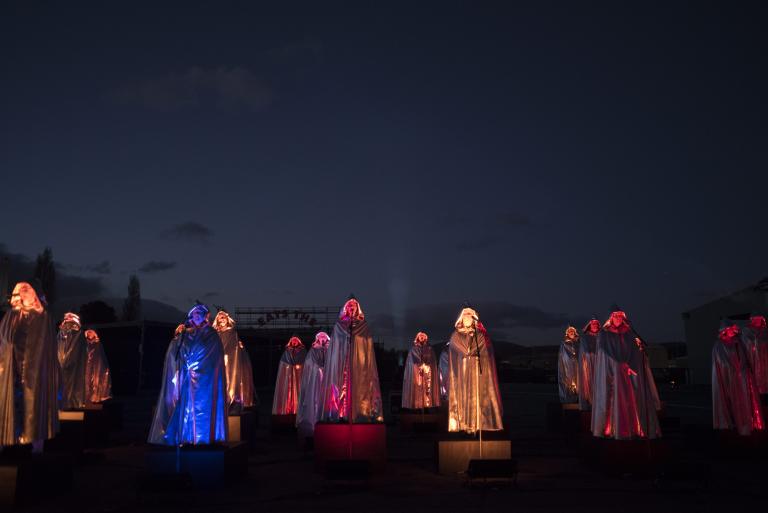Meet Michaela Gleave // A Galaxy of Suns
A Galaxy of Suns is a spectacular 36-part choir performance that ‘sings’ the stars as they rise and set over 360˚ of the horizon. We chat to the brains behind the work, Michaela Gleave..
Who are you and what do you create?
My name is Michaela Gleave and I’m a visual artist who creates work about perception, the nature of reality, and how it is that we understand and exist in the world around us. I’m interested in creating experiences for people that extend the ways they might see and understand the universe, often in the form of performative installation environments. Many of my works focus on the space of the sky as a site for enquiry, and I often reference astronomy in the projects that I create.
What materials and techniques do you use?
My practice is very context driven and I work across a range of platforms, with each project suggesting the material or medium most suitable. My background is as an installation artist, with this sensibility informing most of the works that I make, whether they be digital or online performances, a smart phone app, public sculptures, videos or print based work.
/index.jpg?itok=n9CS1NCk)
Tell us about A Galaxy of Suns; what technology does it use and how does it work?
A Galaxy of Suns is a musical composition driven by the real-time motion of the stars across the sky. The project treats the Earth as a giant spinning music box, with stars triggering notes as they rise and set over the horizon. At the heart of the project is custom computer program that maps live star data to aesthetic variables such as pitch, colour, volume and panning. A Galaxy of Suns started life as a free-to-download music app, using the native potentials of smart phone technology such as GPS, time, and compass coordinates, and has since gone on to become a 36-part choral composition in which singers sing the stars live for any location on Earth.
What was the inspiration for this work?
I’m interested in looking at the edges of human experience in order to suggest what might exist beyond, and as such have been drawn to astronomy as the physical limiter of our knowledge of the universe. I like looking at things that hover on the edges of perception, such as the stars, as well as considering times and scales outside of human experience. A Galaxy of Suns plays the 118,000 stars that were catalogued by the European Space Agency’s Hipparchos satellite, extending an experience of the stars to ones well outside of naked eye visibility as well as playing the stars during the day when they are obscured by the sun. The inspiration for the work was a dot matrix printer I created that printed the details of one star every minute, in real-time for the location of the viewer. A composer friend saw an image of this art work online, messaged me to say that if I sent her the data she’d turn it into sound, and the rest is history!
A Galaxy of Suns was performed at Horizon Festival 2019 on Saturday the 31st of August and Bankfoot House. Don't miss our four-minute Rewind feature as part of our June 2020 program.

